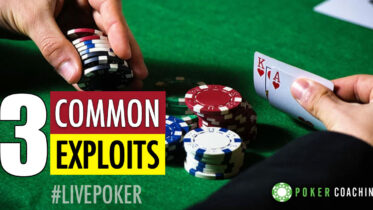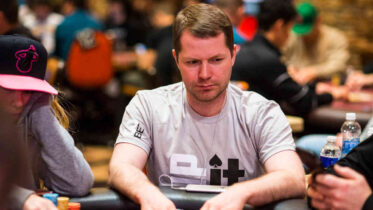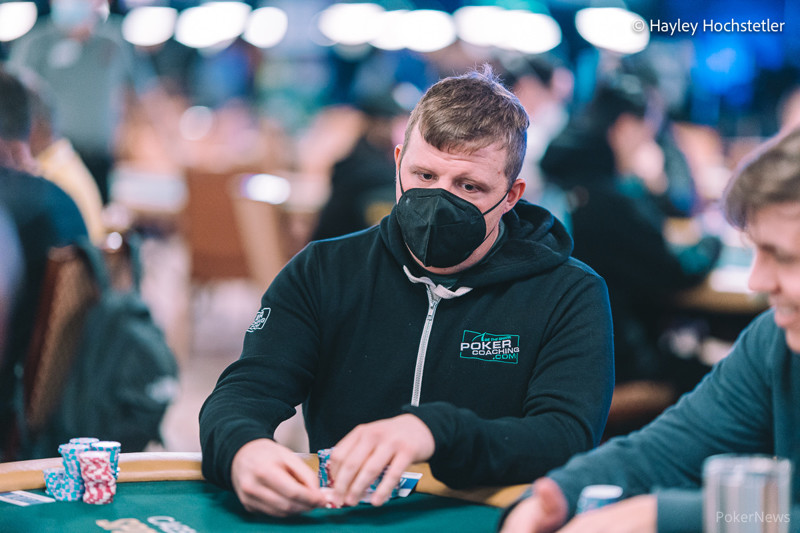Here we are going to discuss three areas where I feel weak: live poker players are easily exploited in tournaments. This article will hopefully give you three areas in your game to explore for leaks, as well as exploit leaks in your opponents. Use these three areas in two ways when implementing in your tournament poker game.
First, look for these mistakes in your opponents and use the simple adjustments to exploit them. Second, make sure you are not making the same mistakes I am presenting. In both cases, you should easily improve your win rate by implementing them into your game. As always, there are exceptions to every rule. I am making generalizations about the player pool you will often see in small to mid-stakes live tournaments. Use your reads and opponents’ tendencies against them.
Jump to:Never Call With Your Bluff Catchers
The first exploit we will look at is that poker players severely under-bluff later streets, especially when large-sizing. The exploit to be made here is to never call with your bluff catchers. A bluff catcher would be any hand that can only beat a bluff and never beat a value hand. Another way to phrase this would be saying, “The player is never value betting a worse hand, thus my hand is a bluff catcher.” In general, when a player on the river makes a large, polarizing bet (often a very strong hand or bluff), they do not have enough bluff combos in their range to make us indifferent with our bluff catchers.
The goal of a polarizing bet is to make your opponent indifferent to calling or folding with bluff catchers. If they fold too many bluff catchers, they are folding too much, and the bettor makes money.
If they call too many bluff catchers, they call too often and lose money. Almost every opponent you will face does not include enough bluffs in their polarizing sizing to make us indifferent between call and fold. Thus, the max exploit is to fold ALL bluff catchers and only call hands that can beat value bets. Until opponents show that they can include enough bluffs in their polarized range, you are incentivized to overfold to these bets.
Checkraise Like a Pro
The next tournament exploit we will look at involves flop c-betting. In general, your average player c-bets way too often. Your average poker player does not check-raise nearly enough to be optimal. These two exploits go together because one leads to the other. Players over-c-bet because they don’t check-raise enough, which is an exploit in itself. The problem is that most players don’t adjust their ranges correctly when they face opponents who properly check-raise.
In general, you should be looking to increase your check-raising frequency by a lot against most poker players. Many tournament players would be blown away that optimal check-raise frequencies on certain board textures can be upwards of 20% by the out-of-position player. You almost never see someone check-raise that often. Learn to punish aggressive c-betters by check-raising like a madman and make them uncomfortable.
3-Bet a More Linear Range
The final exploit we will look at involves the 3-bet and 4-bet ranges of our tournament opponents. In general, poker players do not 4-bet nearly often enough compared to what is optimal. The adjustment we make is to 3-bet a more LINEAR range instead of a POLAR range that many players use. For example, against a 20% middle position opening range, we may 3-bet the top 10% of hands in position as a linear range and flat call the rest of our playable hands. Since players under 4-bet, we are not concerned about folding out equity from our non-premium but still good hands that we 3-bet, because they will be heavily dominated.
For example, 99 or KQs become great hands to 3-bet in a linear range versus a player who under 4-bets. Players often over-call to these 4-bets, and thus we get extra value from our range that we forego when we flat-call instead of 3-betting. When they 4-bet, though, 99 and KQs are often in bad shape against AA, KK, QQ, JJ, or AK.
In summary, we need to be folding our bluff catchers on turns and rivers, check-raising more, and 3-betting more linear to exploit population tendencies. Take extra care in looking for these spots in your next few poker sessions. Watch how tournament opponents react and how the exploits can be made.




